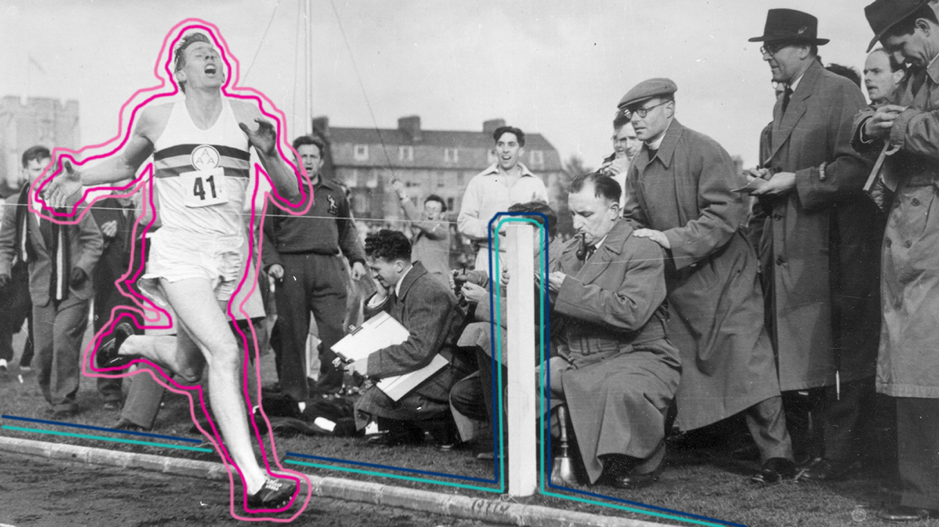In a recent coaching conversation with the managing director of a consistently high-performing business, he mentioned that the company had set yet another record.
There’s nothing unusual about our clients breaking records – after all it’s a part of the continual performance journey that coaching unlocks.
However, in this instance, it was the way he said it that set the synapses firing. It was said as if it was an expectation. There was no arrogance, simply a mindset that at this company, we consistently achieve record performances and here’s another example.
The conversation reminded me of an article published in the Harvard Business Review in March 2018 by Bill Taylor, author of Practically Radical. Taylor emphasised the correlation between breaking new ground and a culture of increasingly high performance and referred to Wind and Crook’s book The Power of Impossible Thinking and specifically how is it that so many runners smashed the four-minute barrier after Bannister became the first to do it?
What changed, they assert, was the mental model. Here’s an excerpt of Taylor’s take on the subject…
Most people know the basic story of Roger Bannister, who, on May 6, 1954, busted through the four-minute barrier with a time of three minutes, fifty-nine and four-tenths of a second. But it was not until I decided to write about him for my book Practically Radical, and read a remarkable account of his exploits by the British journalist and runner John Bryant, that I understood the story behind the story — and the lessons it holds for leaders who want to bust through barriers in their fields. Bryant reminds us that runners had been chasing the goal seriously since at least 1886, and that the challenge involved the most brilliant coaches and gifted athletes in North America, Europe, and Australia. “For years, milers had been striving against the clock, but the elusive four minutes had always beaten them,” he notes. “It had become as much a psychological barrier as a physical one. And like an unconquerable mountain, the closer it was approached, the more daunting it seemed.”
So the four-minute barrier stood for decades — and when it fell, the circumstances defied the confident predictions of the best minds in the sport. The experts believed they knew the precise conditions under which the mark would fall. It would have to be in perfect weather — 68 degrees and no wind, on a particular kind of track — hard, dry clay — and in front of a huge, boisterous crowd urging the runner on to his best-ever performance. But Bannister did it on a cold day, on a wet track, at a small meet in Oxford, England, before a crowd of just a few thousand people.
When Bannister broke the mark, even his most ardent rivals breathed a sigh of relief. At last, somebody did it! And once they saw it could be done, they did it too. Just 46 days after Bannister’s feat, John Landy, an Australian runner, not only broke the barrier again, with a time of 3 minutes 58 seconds. Then, just a year later, three runners broke the four-minute barrier in a single race. Over the last half-century, more than a thousand runners have conquered a barrier that had once been considered hopelessly out of reach.

Well, what goes for runners goes for leaders running organisations.
In business, progress does not move in straight lines. Whether it’s an executive, an entrepreneur, or a technologist, some innovator changes the game, and that which was thought to be unreachable becomes a benchmark, something for others to shoot for. That’s Roger Bannister’s true legacy and lesson for all of us who see the role of leadership as doing things that haven’t been done before.
In fact, two Wharton School professors have analysed the lessons for business of the four-minute mile. In their book, The Power of Impossible Thinking, Yoram Wind and Colin Crook devote an entire chapter to an assessment of Bannister’s feat and emphasise the mindset behind it rather than the physical achievement.
How is it, they wonder, that so many runners smashed the four-minute barrier after Bannister became the first to do it? “Was there a sudden growth spurt in human evolution? Was there a genetic engineering experiment that created a new race of super runners? No. What changed was the mental model. The runners of the past had been held back by a mindset that said they could not surpass the four-minute mile. When that limit was broken, the others saw that they could do something they had previously thought impossible.”
Most thinking about strategy, competition, and leadership emphasises the intricacies of business models: revenues, costs, niches, and leverage. But mental models are what allow organisations and their leaders to try not just to be the best at what everyone else can do but to do things that only they can do — which, over time, shows others what is possible. They don’t accept the limitations, trade-offs, and middle-of-the-road sensibilities that define conventional wisdom.





